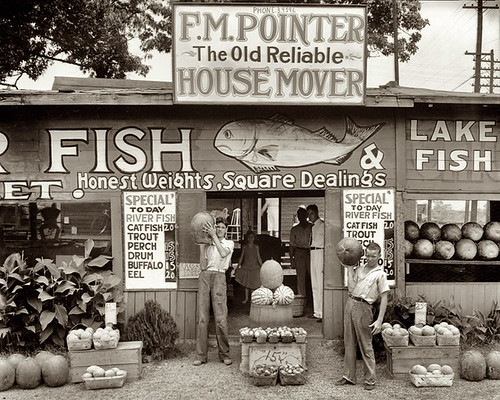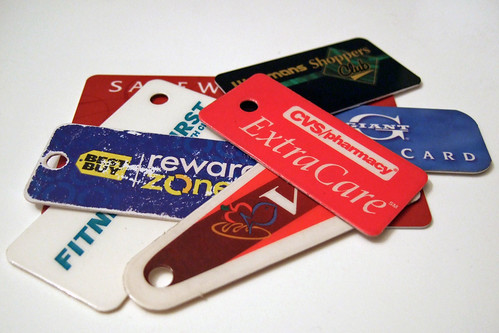HOW TO SAVE YOUR LOCAL NEWSPAPERS
Meet Bobbie Carlton. She’s come up with an idea that every newspaper publisher in New England should have had but didn’t. Her success demonstrates how news publishers can reinvent themselves and survive – maybe even thrive – but only if they have completely rethink what they do.
Carlton isn’t a publisher. She’s a career public relations professional who set out a little more than a year ago to figure out a way to drum up new business in a dismal economy. She knew that there were still plenty of innovative companies in the area that were starved for visibility. Finding investors and customers in a crummy economy was a time-consuming, trial-and-error process. The few conferences that were available for such purposes were either expensive or subjected applicants to long and seemingly arbitrary approvals processes.
Carlton hit on the idea of a cheap, frictionless approach she called Mass Innovation Nights. The events would be free to everyone. Entrepreneurs could show their stuff and hope to catch a big break.
Carlton borrowed meeting space from a local museum. She partnered with Dan Englander of High Rock Media to build a website and a Twitter account and started promoting Mass Innovation Nights entirely through online word of mouth. There was no hype and no inflated expectations. If the event bombed, then attendees got what they paid for.
Only the event didn’t bomb. MassInno, as the affair is now known, is a raging success, with exhibitors now competing for limited space. The most recent meetup was tweeted more than 600 times and drew more than 400 attendees. Carlton is toying with the idea of syndicating the idea across the country.
Today, Carlton has so much business coming in from startups that were boosted by Mass Innovation Nights that she’s having to refer work elsewhere. That makes her a popular person in the depressed local PR economy. Partner High Rock is booming, too.
Why was one woman able to exploit a simple idea at almost no cost while media institutions with hundreds of employees stood by and watched? Because newspapers didn’t think it was their job. They believed they were in the advertising delivery business, not the business of growing the local economy. Newspapers that continue to think this way will shrivel and die over the next few years. But there is a path to salvation. It’s in doing what Bobbie Carlton is doing on a grand scale. But how many publishers are willing to make the sacrifices to seize that opportunity?
The Folly of Paywalls
Newspaper publishers are confronting their current business challenges in the wrong way. They’re trying to battle online competition by becoming more like their competitors, building massive online presences to serve global audiences when their advantage is inherently local. They’re also hyper-focused on a source of revenue – advertising – that will only become more competitive and less profitable in the future. They need to change the rules.
The eyes of the industry are currently trained on The New York Times, which is trying to re-bottle the evil genie it released 15 years ago when it elected to give away its content for free. The Times’ paywall experiment will be modestly successful because it is The New York Times. Publishers in Baltimore, Dallas, St. Louis and hundreds of other cities will be unable to exploit the idea, however, because they lack the Times’ brand and international reach. Paywalls are a waste of time.
Instead, publishers should concentrate on diversifying their revenue streams away from advertising and into local business services that promise stability, growth and a future. This is a market in which they have a natural advantage. Small business is the one great untapped revenue opportunity left in America, which is why giants like American Express and Bank of America are practically throwing money at the market. But these global companies lack the local connections and the feet on the street to truly become partners in small business success. Local newspapers have that advantage.
Most major metro dailies have long regarded local business advertising as the cherry on top of the sundae of display contracts from national advertisers and department stores. Local businesses fueled the classified section, but counted for only a small part of the total revenue picture. Now national advertisers are marketing directly to customers, classified advertising has collapsed and local businesses are publishers’ only hope for a future.
The Local Opportunity
Look at the merchants in your local community. Most don’t know the first thing about marketing. Few are even very good at managing their businesses. Marketing is tough for little guys. They spend their dollars on a mishmash of coupons, flyers, Yellow Pages listings, classified ads and occasional radio and television. Few of them track ROI or have any means to assess the performance of these investments. Online, they’re practically invisible. They know nothing about search marketing or customer relationship management (CRM). In short, the kinds of sophisticated analytics and tools that big companies use are out of reach to mom-and-pops. Lots of businesses want to market better, but they don’t have anyone to teach them how or give them a cost-effective platform to do so.
News organizations can be that platform. They can start by delivering a basic package of marketing and business services on a subscription basis and expand as local conditions dictate. They can potentially manage many of the overhead and backroom activities that sap small business owners’ time. Here are five ways news organizations can monetize this opportunity. There are plenty more where these come from:
Website Development – Few small businesses know anything about the Web. Outside of restaurants and entertainment providers, most have websites that are little more than online brochures, if they have websites at all. Their sites aren’t optimized for search, don’t deliver calls to action and have no means to retain visitors as subscribers. Forget about analytics. If small business owners want to adopt new platforms like blogs or Twitter, they either pay outside consultants or figure out the tools through extensive trial and error.
This is a huge opportunity for news organizations. These companies have long-term relationships with business customers, local credibility and expertise in publishing. They can deliver advanced online features like e-commerce, e-mail marketing, search optimization and analytics at low cost by leveraging economies of scale. There is no reason why the local newspaper publisher can’t also be the dominant provider of online services to local businesses.
Affinity Programs – Every hotel, airline, national retailer and supermarket chain has a loyalty program these days. The reason is simple: they work. Customers who carry affinity cards typically buy between 10% and 30% more product from the merchants who offer the programs than from those who don’t. Unfortunately, few small-business owners have the option of participating. The administrative overhead is high and customers won’t carry cards for every merchant in their community. News organizations could set up these plans as cooperatives, allowing groups of noncompetitive businesses to participate at a modest cost. Commercial grade analytics could be bought and scaled to provide reporting that demonstrates the return to business owners. Revenue would come from the fees paid by the participants and potentially even subscribers to premium buyers clubs.
Events – Lots of small businesses would like to use event marketing to share their expertise and meet new prospects, but if you’ve ever tried to stage a promotional event, you know what an ordeal it is. The details and hidden costs can be overwhelming and few small businesses have the means to manage the leads that result. Again, publishers can come to the rescue. By building expertise at event management and applying it to different businesses within the community, publishers can provide targeted thematic events (for example, outdoor recreation or pet care) at a scale and cost that makes them affordable to local businesses. They can gather and manage leads that result and create marketing programs that optimize them for their customers. The news organization becomes a business partner and consultant, not just an outlet for advertising. There’s even the possibility of generating fees from event attendees in some cases.
Value-Added Advertising – Craigslist has won the war for the low end of the recruitment advertising market. Publishers need to stop mourning the loss of this commodity business and move the bar higher. Christopher Ryan and Steve Outing published a manifesto for competing with Craigslist more than a year ago. Unfortunately, few publishers seemed to have noticed. We won’t try to reinvent their wheel; ReinventingClassifieds.com has some great ideas publishers can apply to take advantage of their local reach and marginalize Craigslist.
For example, they can offer real estate agents or car dealers video walk-throughs of the products they sell. Or they can provide peer recommendations like Angie’s List (more than one million members at $35/year). They can tweet ads and push them to mobile phones. They can even provide transaction and fulfillment services that Craigslist can’t. In short, they can do all the things that Craigslist doesn’t do and build these features into a monthly subscription service that makes them all but invisible to the customer.
![queue.jpg]](http://static.seekingalpha.com/uploads/2008/11/12/saupload_queue.jpg) Transaction Fees – If you’ve ever used Ticketmaster, you’ve experienced the sticker shock of discovering that those $40 Nine Inch Nails tickets carry an eight dollar “convenience fee.” But you pay it because it’s easier than standing in line for two hours. Publishers can tap into that revenue stream.
Transaction Fees – If you’ve ever used Ticketmaster, you’ve experienced the sticker shock of discovering that those $40 Nine Inch Nails tickets carry an eight dollar “convenience fee.” But you pay it because it’s easier than standing in line for two hours. Publishers can tap into that revenue stream.
The local garden show probably isn’t interested in ticket brokering. It may outsource the task to TicketMaster for the sake of convenience but it would really be interested in using a local organization that could combine fees with demographic marketing, behavioral targeting and amenities like e-commerce. Who better to deliver that experience than a service provider that knows the local community? Do you think restaurant or hair salon owners would like to have automated scheduling? The newspaper could provide that, too, with fees from the buyer, the seller or both.
Bottom Line
The five scenarios outlined above are just a sample of the opportunities available to local publishers once they stop thinking of themselves as advertising vessels and become partners in the success of local businesses. At their core, newspapers are marketing tools. Instead of simply providing advertising space, publishers can become marketing consultants, value-added resellers and service bureaus. They can offer the kind of expertise and analytics at a price that mom-and-pops can finally afford.
There are many more possibilities: Publishers could offer accounting, tax preparation, creative services, executive recruitment, business telephony, technical support, facilities management, order fulfillment and so on. Where they lack in-house expertise, they could partner with local providers under an approved-vendor program. Does this mean publishers might compete with their prospective advertisers? Sure, but how many of those companies are advertising now, anyway? Members of the approved-vendor program could potentially buy bigger schedules from the publishers who feed them business.
Back to the Future
 Few publishers will choose to pursue the business model outlined here. It’s too hard. Departments such as circulation will need to be downsized or eliminated. Sales people must be retrained or released. Experts must be hired in new areas and partnership networks will have to be formed. New services will have to be created and priced, software licenses acquired and technology infrastructure put in place. These changes are painful, but reinvention isn’t pretty. It’s easier to sit and hope that paywalls will succeed in letting you do what you’ve always done. Good luck with that.
Few publishers will choose to pursue the business model outlined here. It’s too hard. Departments such as circulation will need to be downsized or eliminated. Sales people must be retrained or released. Experts must be hired in new areas and partnership networks will have to be formed. New services will have to be created and priced, software licenses acquired and technology infrastructure put in place. These changes are painful, but reinvention isn’t pretty. It’s easier to sit and hope that paywalls will succeed in letting you do what you’ve always done. Good luck with that.
If this transformation sounds radical or risky, consider that it’s already been done. More than 20 years ago, many computer companies faced the same kind of near-death experience that confronts newspaper publishers today. Their core hardware products, which generated 80% margins, were suddenly assaulted by cheap, standardized components. Many of these companies died or were acquired, but a few, like IBM and Hewlett-Packard, took the strong medicine that was necessary to transform themselves. Today, IBM derives more than half its revenue from services, a revenue stream that barely even existed 20 years ago. Its 2008 revenue was a record $103 billion. HP made the shift even earlier. Twenty years ago, it was less than one-fifth IBM’s size. In 2009, it was bigger than IBM.
Thanks for sticking with us through this long essay. Now tell us what you think. Are we off the wall or could business services be the prescription that nurses this dying industry back to health?



 by
by 